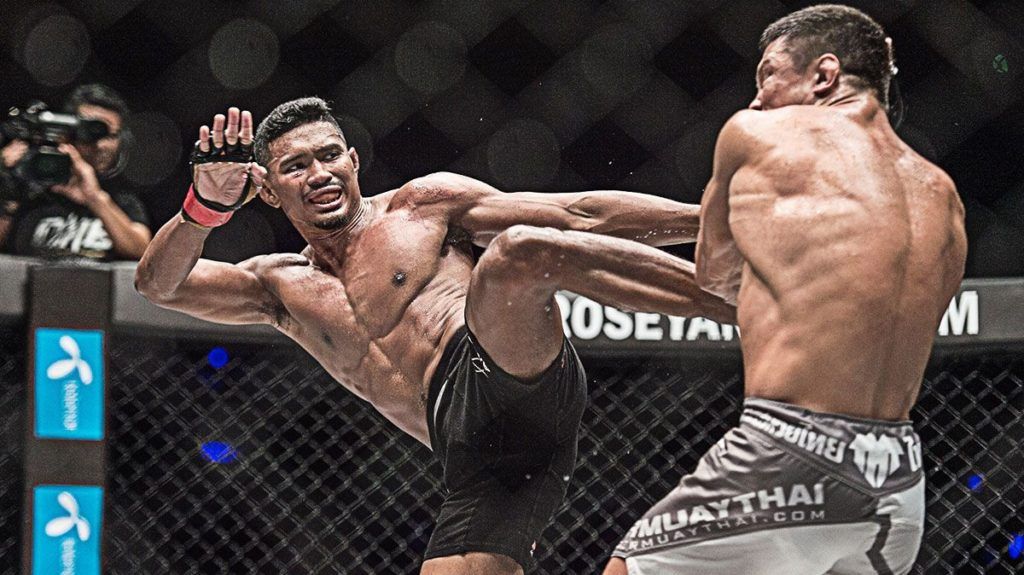While elbows are far from a rarity in mixed martial arts (MMA), it is sometimes surprising not to see them used more.
As the elbow is one of the hardest parts of the body, it is a highly effective weapon of hand-to-hand combat. No one sport emphasizes the effectiveness of elbow strikes more than Muay Thai, where they are among the prime tools of a fighter’s game. Regardless of the style of a Nak Muay (Thai boxer), elbow strikes are universally seen as an important aspect of the discipline.
As MMA is a sport that has borrowed heavily from the “Art of Eight Limbs,” it is no surprise to see many of the elbow-striking techniques of Muay Thai feature in it (albeit not as many as we would like). This in no way invalidates how potent elbow strikes can be against a fighter inside the cage. In close quarter combat, there is truly no weapon as effective as the elbow.
This makes it crucial to any mixed martial artist’s skill set. Given that elbows can be thrown from an array of angles, from the feet to on the floor, incorporating these powerful strikes into your game may give you that extra dimension you’ve been looking for.
Different Types of Elbow Strikes
Where do we start? You will be spoilt for choice when it comes to elbow strikes, although the distance will have to work in your favor. Throwing elbows from an unrealistic range will not just be easy for an opponent to deal with, but is also likely to telegraph.
There are numerous elbows which can be thrown from five main positions in MMA. The most likely positions from which you will have the opportunity to land potent elbows are:
- On the feet
- In the clinch
- On top
The one exception in MMA is the “12-6” rule. No fighter is permitted to strike downward with an elbow, so always keep it in mind. Incidentally, former UFC light heavyweight champion Jon Jones’ only official career loss was a DQ for the use of the 12-6 elbow against Matt Hamill in 2009.
Below, we will take a look at a few of the most effective strikes:
Elbows on the Feet
There are a number of elbows you can throw on the feet, once you have closed the distance with your opponent and are in range.
The bread and butter elbow strike, or the one you are most likely to learn as a beginner, is the horizontal elbow. This strike is one of the easiest to throw but can be difficult to master, given the technique involved. In basic terms, fighters must lift their elbow up so that their forearm is facing the opponent. The elbow is then sliced across the target, with force generated from twisting the hips and thrusting the shoulder.
Another simple but devastating elbow strike to practice on the feet is the upward elbow, which is thrown from south to north. The force is generated from the feet up, with the strike slicing up your middle line. The aim is to land on your opponent’s chin, nose, or middle of the face.
The reverse up elbow is another technique that is highly useful in an MMA setting. It can be an incredibly difficult shot for your opponent to judge, as it is set up by first throwing a jab and then following it up with a cross. Almost crouching down with forwarding pressure, the elbow is thrown on the lead side. You will aim to cut the elbow upward into your opponent’s chin.
Elbows in the Clinch
Nowhere will feel more like home for elbow strikes than the clinch.
The 45-degree walk-in upward elbow is an excellent strike when you hold the inside clinch position. The shot should be aimed for your opponents’ chin or nose and should be thrown when they aim to land a knee or sweep your legs. If you time this shot when your opponent is off balance, it can be a night-ending strike.
The upward elbow strike from the clinch is also another excellent choice from this particular menu. It works effectively when you hold the inside position and especially well from the double-collar tie. Once again, you should be aiming to strike upward at the point when your opponent is off balance.
Ground Elbows on Top
It is worth stating here that it pays to be careful when throwing elbows while on top, given that there is a ban on 12-6s. That being said, once you have practiced your elbows on top, they can be nasty shots from a dominant position. If you are on top of your opponent – especially in the posture up position – you can cause a lot of damage with horizontal elbow drops.
Bear in mind that – once you are avoiding 12-6 elbows – you can cut your opponent to pieces with these shots. Even if you don’t knock them out or cause a stoppage, you can convince them to give up their back.
Diagonal elbow strikes to the body are also massively effective while in guard. Just ensure you keep your elbow compact and tightly buried into your shoulder. Being careless may leave you open to attacks and potential counter-submissions.
As you can see, there are many occasions throughout the course of a fight where elbows can be exceptionally beneficial.
In MMA, the use of elbows is permitted, liberally, so long as fighters are not throwing them in a 12-6 fashion. With enough practice and drilling, the pertinent techniques will pretty much fall into place.
Elbows are not just offensive weapons but can also be used as powerful counter shots and in defensive settings. For any fighter mastering the Muay Thai clinch in MMA, these shots can also prove incredibly beneficial for getting out of a tricky predicament – or ending a fight ahead of schedule – so it certainly pays to implement them into your game.
























